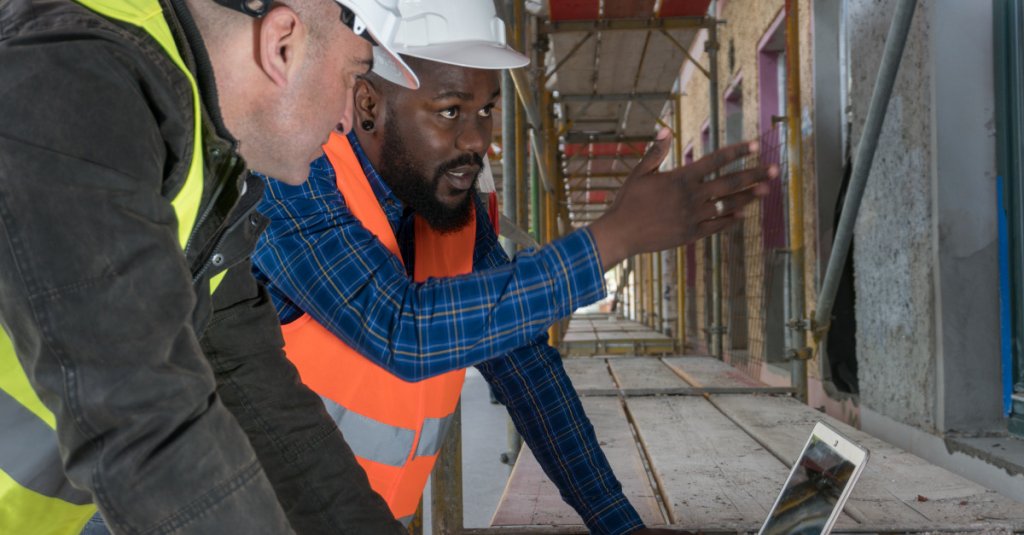Construction can be a hazardous industry, with heavy machinery, great heights, toxic materials, and other physical risks being a normal part of the typical work environment. Many injuries in this field are related to inexperience, and construction employees must be properly trained before starting work onsite.
A thorough and effective onboarding process is one way that companies can protect construction employees from injury. Extensive onboarding is also a profitability measure, because better training will often result in higher productivity and overall quality of work.
There are several important elements of onboarding that all contractors should remember.
Key aspects of construction onboarding
A thorough and effective onboarding process can benefit employees and contractors alike. To ensure that an onboarding process is appropriately comprehensive, a company should start by covering all of the basics.
Paperwork
All of the onboarding paperwork must be prepared and easily accessible. W-4s, I-9s, and emergency contact forms are standard documentation that need to be filled out for virtually any job. Most construction companies should also include additional forms related to safety protocols and expectations.
This paperwork can not only help prevent mishaps but can also protect the company from liability in some cases. It can even help companies track a new hire’s progression through the onboarding process as they complete and sign each document. This paperwork must be continuously updated to reflect any policy or procedural changes.
Engagement and integration
It’s important to help new hires begin to engage and integrate with their teams early in the process. This can be as simple as introducing them to their new coworkers, but could involve more in-depth measures such as group exercises.
By fostering this engagement early on, companies can cultivate trust and communication between employees. Effective collaboration is a key safety mechanism in the construction industry, and coworkers can warn each other about hazards, remind each other about proper procedures, and provide assistance for tasks as needed.
Communication
Companies should familiarize new hires with their communication channels and procedures early in the onboarding process. For example, if the company uses any construction communication software or intercom systems, the new hire should be made aware of these and shown how to use them.
It is also important to provide new hires with key contacts and where to find them. For example, the employee should know who to call about mechanical malfunctions or accidents, as well as how to contact them. They shouldn't have to scramble to find this information in the event of an emergency.
IT and security
New hires should also learn about all security procedures and best practices. This is related to both physical security on the premises and digital security. Physical security involves protocols such as how to secure equipment and when to arm an alarm system.
Meanwhile, digital security involves protocols such as limitations on certain types of information and the use of strong passwords. By understanding and following these procedures, employees can prevent security breaches that could be costly or dangerous.
Tips for effective onboarding
The particulars of an onboarding process will, to some degree, depend on the individual company and position. However, construction managers can improve the quality of their onboarding process by implementing the following basic strategies.
Establish clear standardized protocols
By establishing clearly-defined, company-wide protocols for important processes, it will be easier to convey boundaries and expectations to new hires. This strategy can also have the benefit of improving overall operational efficiency. Examples of protocols that should be standardized include those related to the following:
Clocking in
Monitoring inventory
Identification
Emergency response
Filing complaints
Documentation
Lock up procedures
Workflow management
It will be important to ensure that new hires are aware of protocols, as well as any helpful tools that the company uses to monitor and manage procedures, such as using a construction time tracking app or construction project management apps.
Provide thorough hazard and compliance training
Companies should provide comprehensive training related to general safety procedures, hazard response, and compliance with standard operating procedures. If your company utilizes construction safety management software, the new employee should be briefed on this too. Safety training ideally should be conducted in a variety of ways.
There are many options for training formats, but some examples include:
Toolbox talks
Webinars
On-site training
Shadowing
Additionally, this training should be ongoing. Regular, company-wide training sessions should be conducted to reinforce core principals and keep employees updated on new or changing safety procedures. It may be best to upload safety talks and training to the cloud for easy access to all employees. This type of training is also important for adherence to government-mandated safety regulations.
Monitor the orientation process
The onboarding process should be a constant work in progress. By monitoring the process and identifying what is effective and where there are areas for opportunity, a company can gradually improve its standards.
It may also be helpful to monitor and compare the progress of new hires who were onboarded using different strategies. This may offer further clues as to which strategies are most effective. This can be achieved through efforts such as check-ins, digital reports, and surveys.
Encourage questions
It is important that employees feel comfortable asking questions, as this can both prevent safety issues and give the company insight into areas for improvement. When it comes to safety procedures, it is vital that employees fully understand expectations and how to meet them.
Additionally, if new employees are commonly asking the same questions, that may indicate that training regarding that information should be updated.
